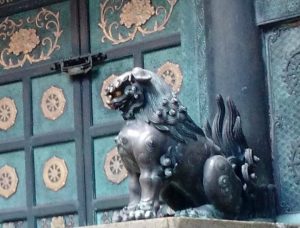While international travel always brings one into contact with new foods, new people, and new ways of life, the diversity of our world is never so striking as the moment where you think, this would never happen where I come from. I’ve had a couple of those moments in Japan, having grown up in a Chicago suburb. In Tokyo, people leave their bicycles on the street overnight without locking them up. Some public bathrooms just don’t have soap in them. People know how to sort their garbage.
To be fair to my home town, there are seven different types of recyclables, and it was always a guessing game as to which could actually go in the recycling bin. I think it’s a shame, though, that we don’t have garbage incineration like the one our class visited in Tokyo. When looking at the history of environmental issues, many times business interests collide with environmental interests, meaning that an important economic boon must be balanced with trade-offs to environmental health. However, the garbage incinerator is a case where these interests can align. The massive incinerator in Tokyo takes “burnable” garbage (that is, anything that will burn at approximately 800°C/1472°F) and reduces it to one-twentieth of its original weight. The burn is self-sustaining once ignited, and the heat created by the burning garbage can be used to generate electricity. The incinerator creates enough electricity to power itself and then some, so it can even sell its excess to power companies. This whole process would not be possible without large-scale coordination and diligence in sorting garbage, but I think it is important to specifically highlight instances where ingenuity and effort create solutions that support both economic and environmental well-being. Ultimately, humans cannot extract themselves from nature, so it is critical that we find ways to live with it rather than against it.

